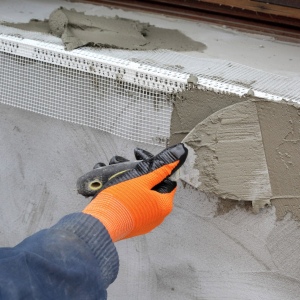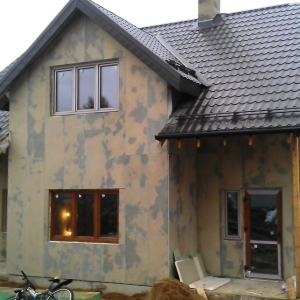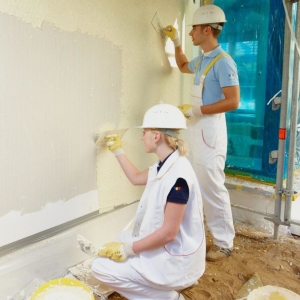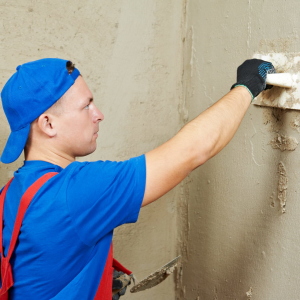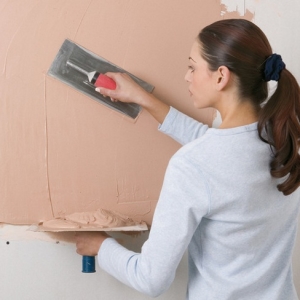Sooner or later in any room, be it home, office, cottage or apartment, you will have to make repairs. For those who do not know, the cost of construction works is quite high today, so if you want to save, you need to study yourself, and after practicing some basic types of repair work. One of these works includes plaster.
It is not necessary to think that only a professional master can produce high-quality plastering, in fact, everything is not as difficult as it may seem at first glance. Immediately, I would like to note that the shuttering scheme itself is not difficult, but the work itself is quite laborious, so it should not think that in a couple of hours you will handle such a thing.
Ways to level the walls
So, I would like to start with the analysis of existing plastering methods:
- In the event that the walls in the room are relatively smooth and there are no excessive drops, deviations, then the method is perfect for the plane in the plane, in this case the beacons will not be needed.
- If the irregularities on the walls are significant, and the deviations on them are left to desire the best, then without makov just do not do.

Immediately, I would like to note that it should not save on alignment of walls, because this process is basic in any repair, and the durability of the repair and its appearance will depend on the quality of the plastering.
Requirements for plaster
As it has already become clear from the above, the quality of plaster can be different, ranging from simple, ending with high quality. So, consider all available options:
- If shuttering is simple, then the deviations on the vertical plane can reach 4 mm per meter, but at the same time, this indicator should not be more than 16 mm. In order to be visually, consider the room, the ceiling in which is 2.5 meters, in this case the deviation should not be more than 7.5 mm. Smooth irregularities with this form of plastering are also allowed, but by 4 m 2 there must be such no more than 3-4 pieces (height, as well as the depth of such irregularities should not exceed 4 mm).
- The second quality option is an improved stucco. In this case, one meter of the disption walls should be no more than 2mm, but that over the entire surface of these deviations, more than 12 mm did not make it possible. Smooth irregularities are also permissible, but their number decreases to 2 pcs. on 5 meters 2.

- Tolerances with high-quality plaster: on the surface meter not more than 1 mm deviations, the entire height of the room is not more than 4mm. Maximum number of irregularities by 3 m 2, total 2. Such plastering can be called perfect.
Alignment of walls by lighthouses is a great way to highlight walls with too large drops, irregularities, depressions. Lighthouse profile, a kind of limiter, which makes it possible to make shuttering with an error of 1 mm on m 2.
Mix for plaster
The most popular solutions in the case under consideration are gypsum mixes and cement. If you choose from the two options presented, the mixture will be relevant on a plaster basis and there are a number of reasons for this:
- the ability to apply to the surface with a thick layer, at this, no cracks are formed
- no shocks, in contrast to cement mortar
- plastic plasticity is at a high level
- the level of adhesion of the considered solution is high, and the weight is small, thanks to such characteristics, it is possible to use such a mixture to align the ceilings
- high heat and sound insulation
- concrete surfaces can be plastering without applying a grid of reinforcing type on them
Light profiles
- Metal beams. In the process of plastering the uneven walls, it is not to do without beacons. Metal beacons are called small profiles made of galvanized iron. On their surfaces are the holes of the perforated type, they are also some limiters during the shocking of the surface. The mounting of the auxiliary elements under consideration is carried out by using a perforator and bugs.
- Lights from gypsum. If the walls are not too curves, you can do without metal beacons. In this case, the use of beacons from plaster will be relevant. The use of such elements will save money and temporary.
- Plastic beacons. The elements under consideration of the analogue of metal muffs, but they are made of plastic, and high quality. The main disadvantages of the plastic elements are their fragility, so that heavily beat the tool on them, it is not worth it.
Tools and materials

List of tools that will be needed for placing the room:
- mixture of plaster
- 5-6 Mayakkov
- perforator
- shpuras and dowels
- screwdriver
- level
- scissors for metal
- putty knife
- hammer
- gloves
- roulette
This list may seem quite large, but it is worth noting that most of the tools and materials from this list, have every home, so the main cost will come to the acquisition of the perforator and the mixture itself.
Plaster process
From the very beginning it is necessary to place the walls, brew them and install beacons:
- Search for irregularities and their measurements, all existing deviations need to be marked with a marker.
- Application for lighthouses. The distance between the elements under consideration should not be more than 160 cm.
- Surface primer is a mandatory process to be made before applying a plaster mix.
- After drying the walls, proceed to the fastening of beacons.
- Applying plaster
- Putting plaster

As it turned out, the process of plastering is not so complex, as many seems to be, but the main components of high-quality plaster are the main components of high-quality plaster. For those who find it difficult to perceive the instructions on the ear, can view a video lesson in which everything will be not only described in detail, but also shown.













